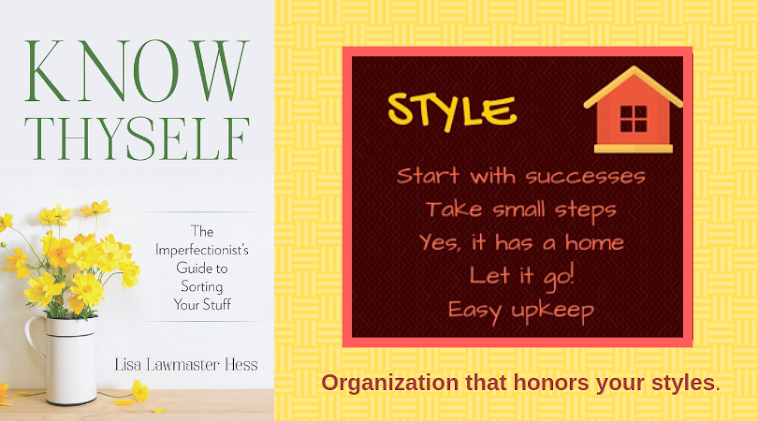Summer often gives us time to step back and take a look at our homes. Here are some things to consider if now is the time for some organizational updates.
Then:
Unless you've recently moved, renovated or redecorated, you probably haven't updated your organizational set-up recently. Like the squeaky wheel, organizational systems typically get attention only when they aren't working. In the meantime, we often settle for "good enough" when one small change could make a big difference. And, we sometimes don't even know we're doing it.
Often, the first sign that we need to make a change is that things aren't getting retrieved or put away in a timely manner. While we might point to ourselves (or someone else in the house) as the problem, there's often a deeper issue at work. Three simple questions can be the key to turning so-so systems into storage solutions.- Is the system easy to use? An overly complicated storage system is sometimes as bad as none at all. When putting things away is difficult, we choose the path of least resistance, putting things down instead of away (drop and run organizers), putting them wherever there is space (I know I put it somewhere organizers) or stuffing them somewhere (cram and jammers). When we do this, we exacerbate the problem, creating a retrieval issue. Drop and run organizers must retrace their steps and dig through piles. I know I put it somewhere organizers race around frantically trying to remember which safe place they put the necessary item in and cram and jammers attempt to retrieve things from overstuffed spaces, hoping the thing they're searching for won't be crumpled, torn or broken when they find it. In the process, we waste time, frustrate ourselves and often create chaos. Often, however, it's this process that reveals the answer to the questions behind this problem: what's stopping me from using this system and how can I fix that?
- Is it in the right place? Similarly, if we have to climb ladders, move piles or take a cupboard apart to find something we use often, it's in the wrong place. While it makes sense to store things we use only occasionally in out-of-the-way locations (especially when space is an issue), the things we use frequently need to be easier to access. Store it where it's used, store frequently used items in easy-to-access places and store similar items together.
- Do I like it? Although this might not affect how well the system works, it can affect how likely we are to use it. If it's fantabulously functional (a worn accordion file with just the right number of labeled sections, for example), we might not care how it looks, especially if we tuck it away in a drawer or closet. But, if you're taking your system from so-so to spectacular, the aesthetics of containers and systems are worth considering.
Best of all, you'll be too busy taking pride in your new system to have time to point the finger of blame at anyone, including yourself.
 |
| realworkhard via Pixabay |
 |
| Alexas Fotos via Pixabay |









